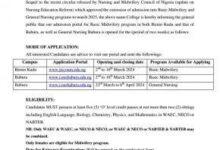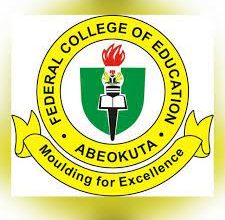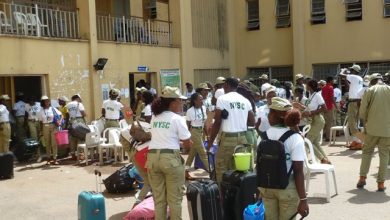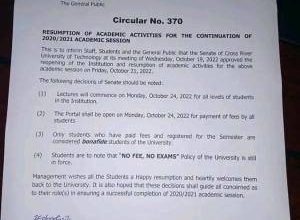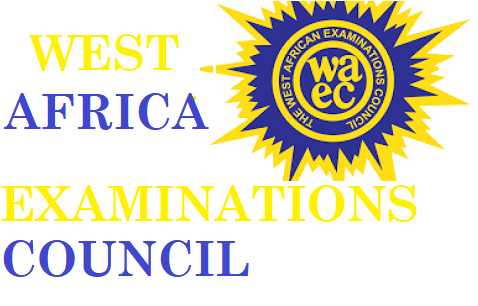
WAEC Syllabus for Electrical Installation And Maintenance Work
WAEC Syllabus for Electrical Installation And Maintenance Work. WAEC Syllabus for Electrical Installation And Maintenance Work is available for all candidates who want to participate in the examination. The West African examination council (WAEC) has officially introduced a syllabus that will guide all the WAEC candidates who wish to write the WAEC examination this year. For a very successful WAEC Electrical Installation And Maintenance Work examination for this year, you need to check out the available areas of concentration. It has been divided into sections with chapters, followed by the topics to be covered in preparation for the exams. In the WAEC Syllabus for Electrical Installation And Maintenance Work, you will also see the format of how the WAEC Electrical Installation And Maintenance Work questions will be presented. Jamb form
There are 2 sections to answer questions from. Paper 1 is Objective questions and then 2 contains essay questions and practical test. Where paper one (1) carries 45 minutes for 40 marks, paper two (2) carries 100 marks for 2 hours 15 minutes WAEC Syllabus for Electrical Installation And Maintenance Work
👉 Relocate to Canada Today!
Live, Study and Work in Canada. No Payment is Required! Hurry Now click here to Apply >> Immigrate to Canada
This WAEC syllabus is for both the O’level WAEC and General Certificate Examination (GCE) candidates. Final year students in the senior secondary school level and external candidates are eligible to make use of this syllabus and prepare ahead of the examination.
See the full detailed information concerning the WAEC Electrical Installation And Maintenance Work Syllabus below.
PREAMBLE
This examination syllabus emanates from the senior secondary school trade curriculum on electrical installation and maintenance work. It does not replace the curriculum. It is designed to assess candidates’ skills in electrical installation and maintenance work in terms of basic knowledge and application of electricity, faults finding in electrical installations as well as maintenance and repair of electrical machines. It is also designed to test candidates’ knowledge of setting up and managing small scale business in electrical installation and maintenance work.
AIMS AND OBJECTIVES
The aims and objectives of the syllabus are to test candidates’ knowledge and understanding of
- safety rules and regulation in electrical installation and maintenance work.
- electrical installation tools, materials and accessories.
- wiring of buildings.
- installation of electrical machines and repairs.
- rewinding of electrical machines.
- entrepreneurship skill in electrical installation and maintenance.
EXAMINATION SCHEME
There will be two papers, Papers 1 and 2; both of which will be a composite paper to be taken at one sitting.
PAPER 1: Will consist of forty multiple choice objective questions to be answered in 45 minutes for 40 marks.
PAPER 2: Will be essay and test of practical work paper, covering the entire syllabus. It will be in two sections; Sections A and B as follows:
👉 Relocate to Canada Today!
Live, Study and Work in Canada. No Payment is Required! Hurry Now click here to Apply >> Immigrate to CanadaSection A: Will consist of three essay questions out of which candidates will be required to answer two questions in 1 hour for 50 marks.
Section B: Will be a test of practical work and will contain two compulsory questions drawn from Sections B and C of the syllabus. Candidates will be required to answer the questions in 1 hour 15 minutes for 50 marks.
The paper will therefore take 2 hours 15 minutes and carry 100 marks.
DETAILED SYLLABUS
| CONTENT | NOTES |
1. Hazards in electrical workshop.
2. Dangers in electrical workshop.
3. Precautions in handling electrical tools and materials.
4. First-aid for electrical accidents.
5. Statutory regulations.
1. Measuring, marking and striking tools.
2. Types and preparation of cables.
3. Electrical accessories.
4. Cells
1. Working drawing.
2. Generation, transmission and distribution systems.
3. Surface wiring.
4. Conduit wiring.
5. Illumination.
6. Soldering
7. Joints and termination of cables.
8. Installation
9. Underground cable installation.
10. Overhead wire installation.
11. Inspection and testing of domestic installation.
12. D.C machines.
13. A.C machines.
14. Installation of machines.
15. Tools and equipment for rewinding jobs.
16. Winding drawing.
17. Rewinding of single phase electric motor.
18. Armature, commutator and slip rings.
1. Installation of protective devices.
2. Maintenance of electrical equipment.
3. Dismantling and assembling of machines.
4. Repair of electrical machines, equipment and installation.
|
Causes of accidents, prevention of accidents and precautions to be taken.
Dangers arising as a result of faulty equipment and tools, chemicals, water, poor joint and insulation strains and moving machines.
Care and maintenance of electrical tools.
Contents of first-aid box, treatment for cuts, burns and electrical shock. Procedures for first aid (e.g. removing casualty from contact with live wire and administering artificial respiration).
Various statutory regulations (electricity supply regulations, factory acts and IEE regulations). Importance, aims and objectives of statutory regulations and applications of statutory regulations.
Types and uses of measuring instruments. Types and uses of marking and striking tools.
Types, sizes and preparation of cables. Types of armoured cables, reasons for armouring, parts of armoured cables, joints and terminations of armoured cables. Types of data cables (e.g. computer cable, fibre optics and co-axial cable) and their uses. Other types of cables (sheathed, screaned or H-type, gas pressured impregnated and MICC cables)
Types of electrical accessories (switches, sockets, lamp holders, ceiling roses, joint boxes, plugs etc.) and their uses. Regulations guiding their uses.
Types of cells (primary and secondary), working Principles of cells and construction of a simple cell.
Draw and identify electrical BS symbols (switches, lamp holders, sockets, cooker control units etc.).
Drawing and interpretation of circuit diagrams of generation, transmission and distribution systems. Wiring drawing and scale drawing of a living room
Materials for surface wiring (cables-1mm2, 1.5mm2, clips, nails etc.). Tools for surface wiring (hammers, screw drivers, pliers etc.). Factors affecting current rating of cables (e.g. types of conductors, ambient temperature and types of excess current protection). Wiring a point of light controlled from two independent positions.
Explain conduit wiring, types (e.g. PVC, galvanized, surface and concealed), advantages and disadvantages. Identification and uses of conduit wiring. Procedures for conduit installation (piping, wiring and fitting). Types of conduit boxes and fittings (end box, angle, tee-4-way, 2-hole loop-in, junction box, knock-out box, couplers etc.). Tools for conduit wiring (bending spring, bending machine, hammer, chisel, hacksaw stove etc.). Materials for conduit wiring (union gum, conduit box, conduit pipes etc.)
Concept of illumination. Factors affecting illumination. Definition of illumination, luminous flux and luminous intensity. Types of lamps. Mathematical calculation on illumination. Measurement of illumination using the photometer.
Types of solders and fluxes. Operations and maintenance of blow-lamps. The use of pot and ladle in soldering cable of big sizes. Soldering of joints. Types of conducting materials (e.g. copper, aluminum and silver) and their advantages and dis- advantages. Significance of heat transfer on conductors. Tools and materials used in cable jointing; e.g. soldering bit, blow-lamp, solder, soldering iron, propane gas, pot and ladle, insulated wire and flux. Types of insulating materials (e.g. PVC rubber, paper, mica and bakelite). Types of joints (e.g. tee, married, twist, telescope and scarf). Preparation of cable for joints and terminations. MICC cable, preparations of MICC cable for termination. Tools and materials used in MICC installation. Advantages and disadvantages of MICC. Simple surface and industrial installation. Types of bus-bar trunking, fabrication of ducts and trunking accessories. Requirements of IEE regulations on MICC, trunking and ducting.
Types of cable for underground electrical installation work; e.g. sheathed, screened or H-type and gas pressured impregnated. Trench preparation, laying of underground cables, tools and materials for underground cable installation. IEE regulations for underground cable installation.
Tools, cables/wires and equipment used in overhead distribution/transmission. Types of insulation used for overhead distribution/transmission. Types and uses of stay wires. Drawing of lines and cross-arms. Joints and terminations and electrical continuity.
Types and sequence of test; e.g. polarity, insulation resistance, earthing and continuity of ring circuit. Importance of testing and inspection. Instruments for testing; e.g. Insulator resistance Tester (megger), bell set and ohmmeter.
D.C motors and generators—types, identification, constructional features, operations and applications.
A.C motors and generators—types, identification, constructional features, operations and applications. Differences between D.C and A.C motors; D.C and A.C generators.
Types of enclosure and their applications. Selection of suitable starter for different motors; (e.g. star-delta, direct-on-line and auto transformer) and their principles of operations. Test for correct rotation, short circuit and earth fault. Installation of AC and DC machines.
Identification of tools and equipment for rewinding jobs; (hammers screwdrivers spanners, crimpings, winding machine, mallets etc.).
Drawing and interpretation of simple wave and lap windings. Application of simple wave and lap windings. Determination of coil span per pitch, per phase, per pole. Identification of the position of coil ends on commutator/slip rings for fixed brush on a winding diagram.
Sizes of conductors and types of insulating materials used in winding. Connection of winding coil using prepared data. Continuity and earthing test.
Skimming of armature, slip rings and commutator- under-cutting. Effectiveness of commutators.
Protective devices (fuses and circuit breakers—voltage and current operated). Working principles and application of fuses and circuit breakers. Regulation guiding installation of protective devices.
Types of maintenance (preventive and corrective). Procedures for machine and equipment maintenance. Grades of lubricants and their application. Constructional features of some electrical appliances (electric heater, boiler, pressing iron etc.).
Procedures for dismantling machines. Methods of collecting data from the name plate. Assembling of machine parts.
Causes of faults and breakdown. Signs and symptoms of faults and breakdown. Interpretation of circuit diagrams. Trouble shooting techniques (e.g. detection of bad bearing and other parts). Inspection and testing of machines (e.g. performance test). Sources of fund and sourcing for fund for business takeoff. Proposal writing, budgeting and management of business outfit for small scale business. Government rules and regulations as they affect business registration. |
LIST OF FACILITIES AND MAJOR EQUIPMENT/MATERIALS REQUIRED:
- Multi-meter
- Soldering iron
- Tester
- Soldering lead
- Plier (different types
- Set of screw drivers
- Safety chart
- Cable chart
- Hammer
- Megger (Insulation Resistant Tester)
- Fishing Tape
- Measuring tape 3m and 50m
- Pen knife
- Stripper
- Hacksaw
- Bending spring (20mm)
- Bending machine
- Workbench
- Vice
- Handrilling machine
- Single phase electric motor
Check and confirm: How Much is Dollar to Naria Today



